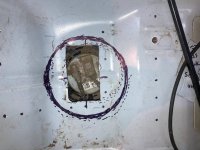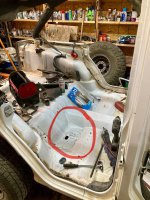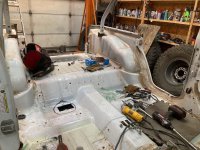Mad Max
Imagineer
- Joined
- May 19, 2020
- Member Number
- 325
- Messages
- 290
well I think I've discovered the cause of my 'chattery' engine - way too much lifter preload. I used digital calipers to measure how far the lifter plunger recesses into the lifter as the valvetrain is tightened up - from 'no slack' to 'tight' there appears to be about...wait for it... 167 thou (.167) of preload...which is about .137 too much (that's just over 1/8"). Spec is .030. This alone is likely the reason the lifters have been so noisy, and only through the simple task of replacing the lifters did I discover it. I have an adjustable pushrod coming along with a set of 8" calipers, and I'll soon know exactly what length of pushrods I need - my prediction is 6.800 (6.941 is what was in it). The spec for these lifters is .030, so yah it was way off.
whilst I'm figuring all that out...axles are back from the blaster and they're ready for the trusses. The Artec truss kits are very impressive jigsaw puzzles - the attention to detail and fitment are the best I've ever seen. Soon as the axles are done the Jeep comes in for disassembly, and I'll get the body off asap to get the frame ready to bolt in the lift kit, and then the axles.




And I'm using 'Steel-It' to pre-paint underneath the hardware in advance of welding it all up - it's a weldable HD stainless steel-infused polyurethane paint - neat stuff, and reeeeeally bad for you -



whilst I'm figuring all that out...axles are back from the blaster and they're ready for the trusses. The Artec truss kits are very impressive jigsaw puzzles - the attention to detail and fitment are the best I've ever seen. Soon as the axles are done the Jeep comes in for disassembly, and I'll get the body off asap to get the frame ready to bolt in the lift kit, and then the axles.
And I'm using 'Steel-It' to pre-paint underneath the hardware in advance of welding it all up - it's a weldable HD stainless steel-infused polyurethane paint - neat stuff, and reeeeeally bad for you -



